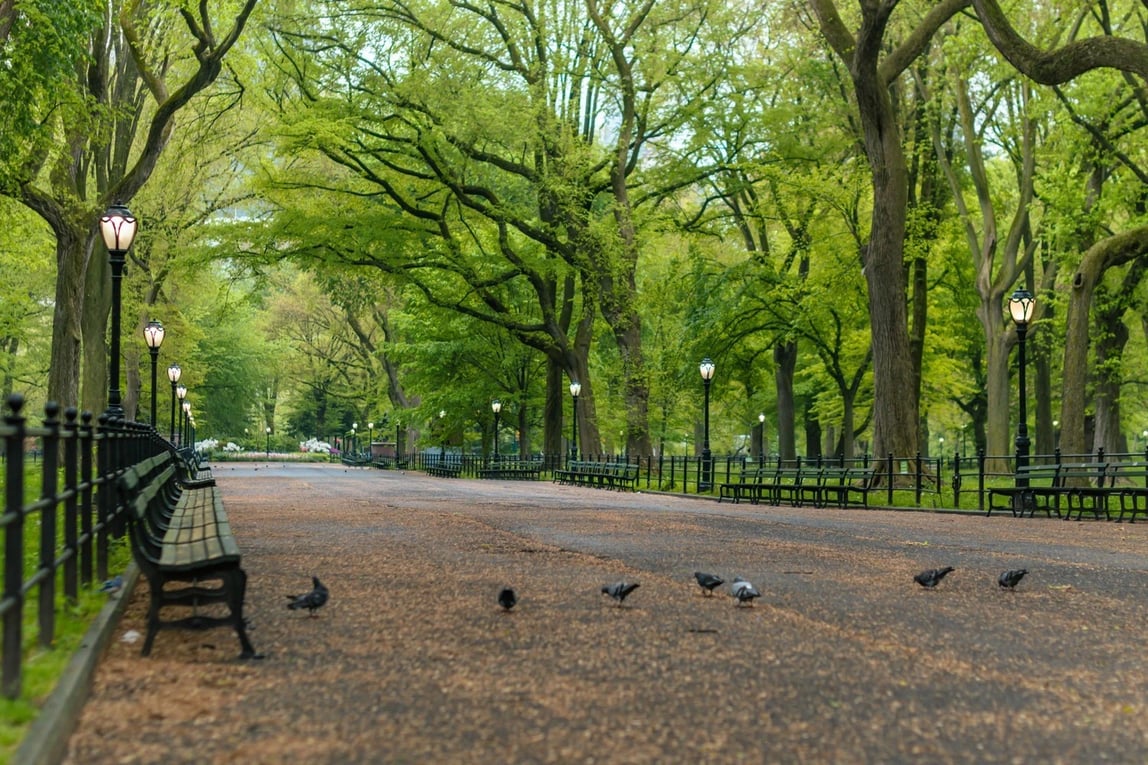Central Park's Hidden Gems: Explore the Park's Best-Kept Secrets

One of New York City’s most iconic destinations, Central Park is a green oasis tucked into the heart of a busy metropolis. With over 843 stunning acres of gorgeous lakes, lush greenery, and charming paths, Central Park has a wealth of activities to offer. Beyond its most well-known spots, though, the park is home to some thrilling hidden gems that are sure to please anyone who stumbles across them.
Continue reading to discover more about Central Park’s best-kept secrets.
The Conservatory Garden
Hidden in the northeastern corner of Central Park, the Conservatory Garden is a spectacular formal garden modeled on Italian, French, and English influences. This six-acre display will transport you straight to the Renaissance, aided by its chrysanthemums, tulips, lilacs, and other perennial plantings. Since 1937, the Conservatory Garden has been open to the public as an oasis within an oasis, far removed from the bustle of the city.
The Conservatory Garden is split into three distinct sections: the English-style South Garden, the Italianate Center Garden, and the French North Garden. The entire area is set apart by the ornate Vanderbilt gate, which was once the entryway to the famous family’s Fifth Avenue mansion.
The Conservatory Garden is perfect for those wishing to revel in Old World beauty while taking a relaxing stroll around the park.
The Ramble
The Ramble, an area of preserved woodlands in the middle of Central Park, has the same energy as upstate New York. Known for its rustic wilderness and wide range of wild birds, the Ramble was meant to help city residents get in touch with nature in an immersive way. Its 36 acres are home to beautiful natural features including Azalea Pond and the Cave; additionally, over 200 species of birds nest here during migration season.
Nature lovers should be sure to visit the Ramble when in Central Park; it’s a marvel of human design and natural landscaping.
The Shakespeare Garden
More European-influenced shrubbery can be found at the Shakespeare Garden, which is hidden along the hill that is home to Central Park’s Belvedere Castle. This four-acre English cottage garden is based on the plants mentioned in English playwright William Shakespeare’s works, including rosemary and pansies — courtesy of Ophelia from Hamlet. There’s even a white mulberry tree that is rumored to have been grafted from a tree Shakespeare himself planted in 1602.
Fans of the Bard will find themselves right at home in the Shakespeare Garden, which is also the ideal place to visit before or after experiencing the famous Shakespeare in the Park at the nearby Delacorte Theater.
Belvedere Castle
More commonly seen from afar than admired up close, Belvedere Castle itself is another hidden gem of Central Park — but this one is hidden in plain sight. This miniature castle sits atop a rocky outcropping, and it was built in 1872 as an observation deck for the surrounding landscape. This dramatic castle’s name literally means “beautiful view” in Italian, and that is exactly what you’ll find there.
One of its best views is of the Ramble, which lies to its south, but it also offers an impressive panorama of the surrounding city. Besides its open-air terraces and turrets, Belvedere Castle is also home to one of Central Park’s visitor centers and a gift shop, making it a must-visit destination for first-time explorers of the park.
Gapstow Bridge
Gapstow Bridge straddles the neck of the Pond, one of Central Park’s lesser-known bodies of water. It is built of rustic stone and looks to be almost one with nature. It’s an incredible spot to snap an Instagram photo or take in the scenery. It represents an essential part of the Central Park architects’ plan — the park was designed by Frederick Law Olmstead and Calvert Vaux — which called for interconnected paths and bridges that made space for pedestrians and carriages. Gapstow Bridge is meant for pedestrians only, but there was a path around the pond for carriages.
Built in 1896 to replace the original bridge, which was designed with cast iron, Gapstow Bridge has a long, proud history and incredible views of the Pond and its surrounding greenery.
Hallett Nature Sanctuary
The park’s smallest woodland area makes up Hallett Nature Sanctuary, an intimate space bordered by the south end of Central Park and the aforementioned Pond. It is named after George Hervey Hallet Jr., a New Yorker famed for his civic activism and enthusiasm for nature. The sanctuary used to be just a rocky hill, inhospitable to visitors, but after being fenced off in the 1930s it became the park’s designated bird sanctuary.
Nowadays, trails run all over Hallett Nature Sanctuary, making it another great place to birdwatch.
Central Park is full of hidden gems waiting to be discovered. From the majestic Belvedere Castle to the elegant Conservatory Garden, the park’s 843 acres have something for everyone.
Central Park’s hidden gems await you. Live mere minutes from the urban oasis with a stay at The Wallace. Book here!
